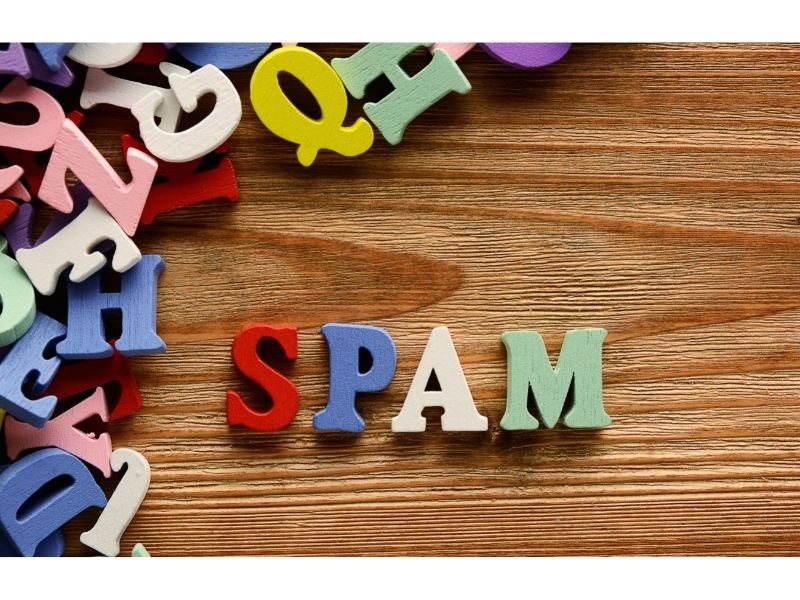dish it out. Why? Because it is still effective. Believe it or not, many of us still click on the links or follow up with the spam message. As long as we continue to do this, spam will exist. If everybody understood this and paid no attention to spam, the spammers will eventually give up because it costs them real money to send out emails. It is hard to quantify what the cost of sending out one, two or fifty emails is, but 1 million or 5 million emails certainly has a cost that is not negligible. When the payback starts to get so small that the spammers cannot make a decent living, they will find something else to do. This day will come and I cannot wait for it to arrive.
In the meantime, what can we do about it. Well, I am not going to tell you that there is a perfect solution that will stop all spam, but what I will tell you is that there is a way to reduce the problem and manage it effectively using the 7 steps outlined below.
Step #1: Get Your Own Domain Name
Fighting spam effectively starts with getting your own domain name. For example, if your name is Andy Williams, you would purchase a domain name called andywilliams.com, which is of course already owned by the famous singer. This has some unique advantages over using an ISP given domain name or a webmail service such as Hotmail or Gmail. It also has some minor disadvantages. Let’s examine these.
One major advantage is that you control the entire email address. You could create emails addresses like andy@andywilliams.com, info@andywilliams.com, sales@andywilliams.com and so on. This is in stark contract to an ISP assigned name like andywilliams@comcast.net. If you wanted another one, you’d have to open up another account or pay extra for each additional ISP assigned address. If you ever decided to switch ISP’s, you would lose that email address and have to start over using a new one, and inform everyone you communicated with about it – a very messy proposition.
Many get around this problem by getting a Hotmail, Yahoo Mail or Gmail account which you can access from anywhere as long as you have internet access. These types of email accounts definitely have a place in your email tool chest but do not suffice as your primary personal email address. One reason is that you do not have access to your email messages and address books when you are not online, like during a long flight. Another drawback is that they do not allow you to export the online address books making portability very tedious.
I prefer owning my own domain name which I call my permanent email address. I will always have this email address as long as I renew this domain name every year. The cost of registering a domain name varies from $4 to $8 per year for most common ones. This is a small price to pay for the advantages it brings you.
The one minor disadvantage of owning your own domain name is that you need to manage it yourself, or have someone do it for you. This in my opinion is far outweighed by the advantages mentioned above.
Step #2: Create Private Email Adresses
A private email address is one that nobody but your inner circle knows about. Every person that you give your personal email address to is someone that you trust and want to receive email from.
Setup one private email address for every person who is going to need to receive messages. This could be you and 5 other members of your family or 12 employees that work for you. This part is quite straightforward, you simply login to your email control panel and create new accounts for each email address that is going to be used to receive email.
Step #3: Create Public Email Addresses As Aliases
A public email address is generally known to the public. It can be specific like andyw@andywilliams.com or generic like receptionist@andywilliams.com.
A public email address is created as an email alias. An email alias is not a real email address, but an address that gets redirected to a real email address. For example, you setup receptionist@andywilliams.com as an alias that redirects to mary@andywilliams.com. Whenever some sends an email to receptionist@andywilliams.com, it will end up in Mary’s inbox. If you change receptionists, you simple modify the redirect for a very elegant solution. You can then publish this public email address on a website, in a brochure, on print advertising, business cards etc. without giving away your personal email address and without having to make much changes if Mary leaves and a new receptionist is hired. This is a huge benefit and maintains your privacy as well as those of others you have created email adresses for.
How does this help with spam, you ask? By using email aliases in a smart fashion, you could very easily shut down any spam that starts coming in. Let’s examine how this can be done.
Step #4: Setup the Default or Catch-all Email Address
Your email control panel will have something called a “default address” or it is also sometimes called a “catch-all address”. This is a valid email address that all unresolved emails go to. If you set this up to be your personal email address for example, then you will receive all emails that are addressed to “anything”@andywilliams.com, this includes sales@andywilliams.com, joe@andywilliams.com, andrew@andywilliams.com etc. Herein lies the secret to combat spam.
Step #5: Create Specific Named Public Email Addresses As And When Required
When you are forced to register on a website where you want to get some information from, you are usually asked for a valid email address. Well guess what, you now have an unlimited supply of valid email adresses. I usually use a specific format when registering at websites – it is “websitename”@andywilliams.com. So if I am registering at a website called www.get-rich-quick.com, I would use the address get-rich-quick@andywilliams.com as my valid email address. When the site sends me an email, it gets redirected to my personal email or whatever the default or catch-all address is.
Step #6: Send Spam Back To Where It Came From, If Possible
Here comes the real bonus, if you subsequently start receiving spam addressed to none other than get-rich-quick@andywilliams.com, you simple create an email alias for get-rich-quick@andywilliams.com and redirect the email back to exactly where it came from, for example georg-bush@get-rick-quick.com. You will then never get another email from anyone using that email address ever again. This is cool and is my favourite part. Bear in mind that spammers usually send email from an address that is not their own, so if you see an address like noreply@get-rick-quick.com, then you would redirect it somewhere else, for example a Hotmail address that you setup just for redirection purposes. Please exercise some discretion here because spammers often use the email addresses of real people and we don’t want these innocent people getting redirected email.
Step #7: Be Diligent In The Ongoing Management Of Your Domain
If you do this diligently for each website where you register by identifying the website name, you will very quickly know which websites are selling email addresses and which ones honor their promise not to share your information. ALl this while, nobody by your personal inner circle knows your private email address.
A real-life example in my case: I use a specific email alias for my Paypal account which nobody but Paypal knows. I have never ever received spam on this address, but I have received hundreds of spam messages on other email aliases that I have created. All of these emails supposedly come from Paypal and address me as “Dear Valued Paypal Member” or something similar, warning me that my account is going to be closed or suspended unless I click on their link and update my credit card information.
I hope that I have given you some food for thought on how to manage the ever growing spam problem by protecting yourself by taking some initiative and getting your own domain name. The added benefit is that you now have a permanent email address no matter where you choose to live or which ISP you use to connect to the internet.
There are many other ways to fight spam which I will perhaps address future articles.

